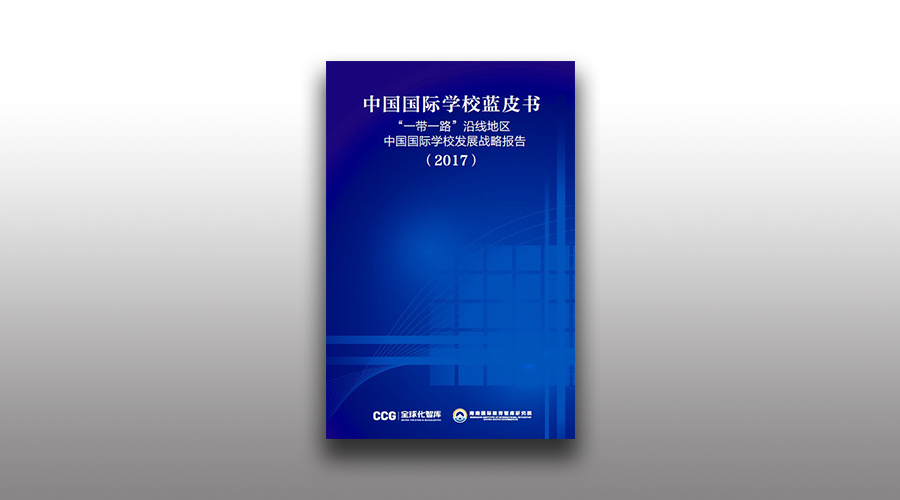全球化(globalization)一词,是一种概念,也是一种人类社会发展的现象过程。全球化目前有诸多定义,通常意义上的全球化是指全球联系不断增强,人类生活在全球规模的基础上发展及全球意识的崛起。国与国之间在政治、经济贸易上互相依存。全球化亦可以解释为世界的压缩和视全球为一个整体。二十世纪九十年代后,随着全球化势力对人类社会影响层面的扩张,已逐渐引起各国政治、教育、社会及文化等学科领域的重视,引发大规模的研究热潮。对于“全球化”的观感是好是坏,目前仍是见仁见智,例如全球化对于本土文化来说就是一把双刃剑,它也会使得本土文化的内涵与自我更新能力逐渐模糊与丧失。
- CCG南方国际人才研究院
- CCG北方国际人才研究院
- CCG一带一路研究所
- CCG世界华商研究所
- CCG数字经济委员会
- CCG南方国际人才研究院图片
- CCG北方国际人才研究院图片
- CCG世界华商研究所图片
- CCG一带一路研究所图片
- CCG数字经济委员会图片
- 成为系列论坛会员
- 成为系列论坛会员联系
- 概况介绍
- 兼职研究员
- 未分类
- 概况
- 全球化
- 全球治理
- 美国
- 国际人才政策
- 中美贸易
- 国际教育理念与政策
- 中国开放指数
- 新闻动态
- CCG品牌论坛
- 中国与全球化论坛
- 学术委员会专家
- 主席/理事长
- 中文图书
- 品牌论坛
- 研究合作
- 重点支持智库研究与活动项目
- 概况视频
- 主任
- 香港委员会名誉主席
- 关于
- 团队
- 国际关系
- 国际组织
- 加拿大
- 华人华侨
- 国际贸易
- 来华留学
- 区域与城市
- 媒体报道
- 二轨外交
- 中国企业全球化论坛
- 高级研究员
- 资深副主席
- 英文图书
- 圆桌研讨
- 建言献策
- 概况手册
- 副主任
- 理事申请
- 香港委员会名誉副主席
- 顾问
- 研究
- 国际移民与人才流动
- 区域合作
- 欧洲
- 中国海归
- 来华投资
- 出国留学
- 大湾区
- 活动预告
- 名家演讲
- 中国全球智库创新年会
- 特邀高级研究员
- 副主席
- 杂志
- 名家演讲
- 媒体采访
- 年报
- 秘书长
- 企业理事
- 香港委员会主席
- 国际顾问
- 国际贸易与投资
- 一带一路
- 亚洲
- 留学生
- 对外投资
- 国际学校
- 动态
- 名家午餐会
- 中国人才50人论坛
- 特邀研究员
- 理事长
- 媒体采访
- 文章投稿
- 副秘书长
- 活动支持
- 香港委员会副主席
- 国际教育
- 非洲
- 数字贸易
- 活动
- 智库圆桌会
- 常务理事
- 智库访谈
- 国际合作
- 总监
- 中国留学人员创新创业论坛
- 研究员
- 研究支持
- 香港委员会常务理事
- 国内政策
- 拉美
- 专家
- 理事
- 直播
- 捐赠支持
- 主管
- 中国国际教育论坛
- 个人捐赠
- 前瞻研究
- 澳洲
- 咨询委员会
- 企业理事
- 其他
- 捐赠联系
- 中东
- 成为理事
- 研究报告
- 建言献策
- 出版物
- 理事申请联系
- 智库研究
- 音视频专区
- 联系我们
- 观点
- 捐赠
- 工作机会
- 香港委员会
-

周晓晶:“一带一路”是通向人类命运共同体的高效途径
专家简介
2018年1月4日 -

B&R reshaping economies, trade
Fundamentally different from previous Western model A freight train departs from Nanchang, East China’s Jiangxi Province to Hanoi, capital of Vietnam. Photo: VCG A freight train operated by China Railway Express, which links China and Eurasia, carries tons of daily necessities such as socks and handbags from Yiwu, East China’s Zhejiang Province to London. Those products are in strong demand in the UK. The new freight route, which is part of the Belt and Road (B&R) initiative, also brings authentic British products such as whisky and baby formula to the world’s second-largest economy. In Kenya, the 480-kilometer Mombasa-Nairobi Standard Gauge Railway, which was officially launched in May, is expected to reduce the time for a passenger traveling from Mombasa to Nairobi to merely four and a half hours compared with nearly 10 hours by bus. These are just two of many examples showcasing how the China-proposed B&R initiative is reshaping regional development, global trade and the world economy.China has made rapid inroads since the beginning of the year, and the initiative offers new global governance solutions to the world. The initiative also yielded some positive results in some countries during the year, remarked Wang Yiwei, director of the Institute of International Affairs of Renmin University of China. "In 2017, Sri Lanka handed over the operating rights of the port of Hambantota to China, and the China-Myanmar oil pipeline began operations," he said, noting that China Railway Express also gained momentum by operating more than 6,000 freight trains since 2011. Also, the China-Pakistan Economic Corridor advanced. In general, the majority of related projects are going smoothly, and the B&R has become a familiar topic with many policymakers and investors around the world, the expert noted. Addressing concerns Not all countries applaud the initiative, and some Western media and think tanks have called it "neocolonialism" - a way of expanding Chinese power overseas. After Sri Lanka formally handed over the port to China Merchant Ports Holdings on a 99-year lease in early December, India had to showcase how the Chinese way of infrastructure construction was little more than a modern neocolonial enterprise, according to Indian media reports. Other B&R projects have also raised concerns in the West. With Germany and Belgium both seen growing wary of Chinese investment in Greece, its largest port - Piraeus - mainly owned by COSCO Shipping, serves as China’s new gateway to Europe, the New York Times reported in April."Chinese investment is fundamentally different from that coming from the West decades ago, as some Western projects were aimed at strengthening political allies," said Huang Rihan, an expert with the Beijing-based Center for China & Globalization(CCG). "Take the port of Hambantota as an example. The Sri Lanka Ports Authority still holds 30 percent ownership, which means that local business representatives can be involved in management, the decision-making process and operations," he said. The Chinese model, which prioritizes development, is not only about the participation of Chinese participants but also of local businesses in countries and regions along the B&R route. "As stakeholders, local business groups will enjoy profit-sharing plans after the project starts working. It will bring reciprocal benefits for both sides," Huang said. India had the chance to build the port of Hambantota years ago, but it rejected this option. "Unlike India, which holds an offensive view on regional cooperation, China wants to ’make the cake bigger’ and benefit more people, that’s the fundamental difference," the expert said. In Africa, China set up a base in Djibouti in July, which already has US and French military bases. But the Western countries frame it as just naval facilities, while China is experimenting with Djibouti as a logistics and supply center, which could accelerate local economic growth, Huang noted. Also, a railway that links Djibouti and its neighboring country Ethiopia is expected to upgrade transport in the region and propel intra-Africa trade. Looking forward Despite a growing consensus on the B&R, policymakers and investors need to tackle issues such as expanding financing channels, paving the way for more sustainable projects and tackling rising debts, experts noted. China has tightened control over capital outflows since the beginning of the year, and economic growth in the country has not performed in line with expectations, which posed concerns over outbound investment, Wang said. An increasing volume of debt in countries and regions along the route also raised concerns among investors. Of the 68 nations and regions that are partners engaged in the initiative, 27 have their sovereign debt rated as junk, Bloomberg reported in October. Some projects are now operated under build-operate-transfer contracts, which have require a long period to generate returns for investors. "That has increased the risks," Huang said.Still, the Asian Infrastructure Investment Bank has set some good examples of evaluating the feasibility and profitability of projects, which could be used as a reference by other Chinese companies that invest in overseas markets, he noted. While building up industrial parks in countries along the route is helping accelerate local industrialization process, Chinese companies have to fully localize their business. "The industrial park in Pakistan, for example, will also help local manufacturing grow," Wang with Renmin University said.From January to November, China decreased investment in 59 countries and regions along the B&R route, according to the Ministry of Commerce.The total investment of Chinese companies in non-financial sectors in those economies reached $12.37 billion, down 7.3 percent year-on-year.The trend echoed the call from experts for more cautious outbound investment. "For 2018, it’s important to build up some sustainable projects to prove that the Chinese model is working," Wang said. From Global Times,2017-12-21
2017年12月25日 -

刘燕华:数字化是”一带一路”建设的基础
专家简介
2017年12月21日 -

智库报告:中国国际学校蓝皮书2017
2017年12月15日 -

Grzegorz W.Kolodko:“一带一路”下的“16+1”框架带动中国、东欧国家共赢合作
Grzegorz W. Kolodko,波兰前副总理、CCG国际顾问
2017年11月20日


